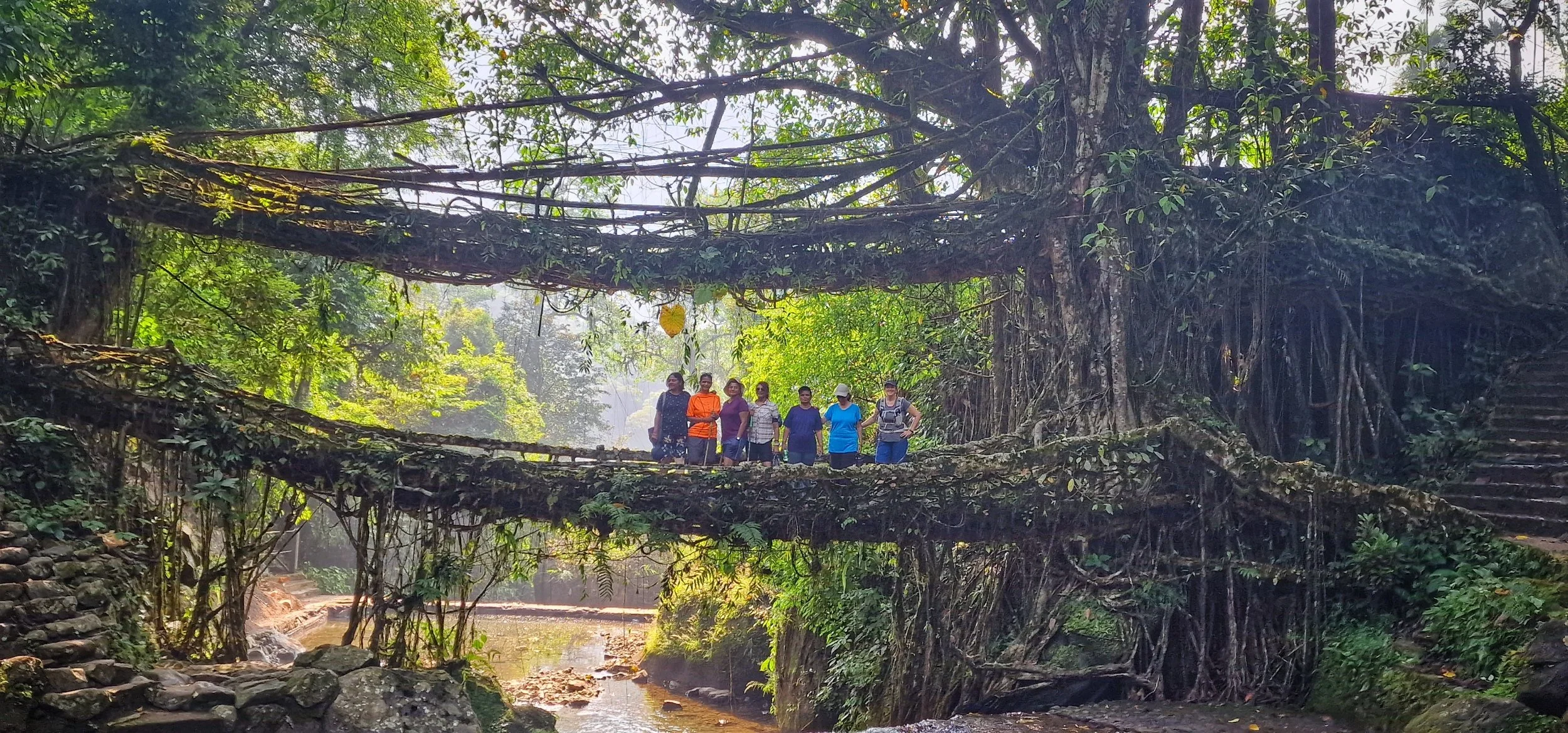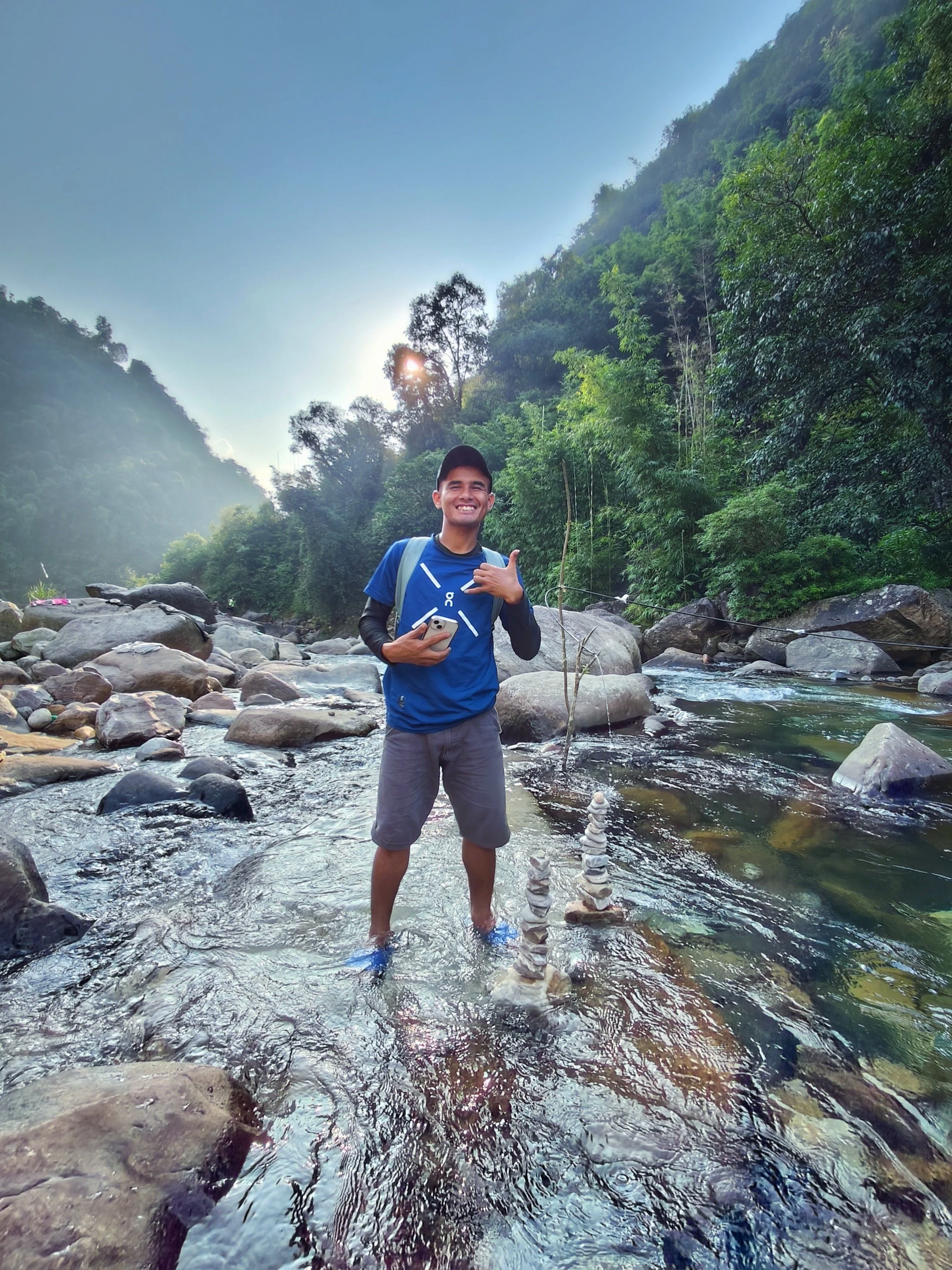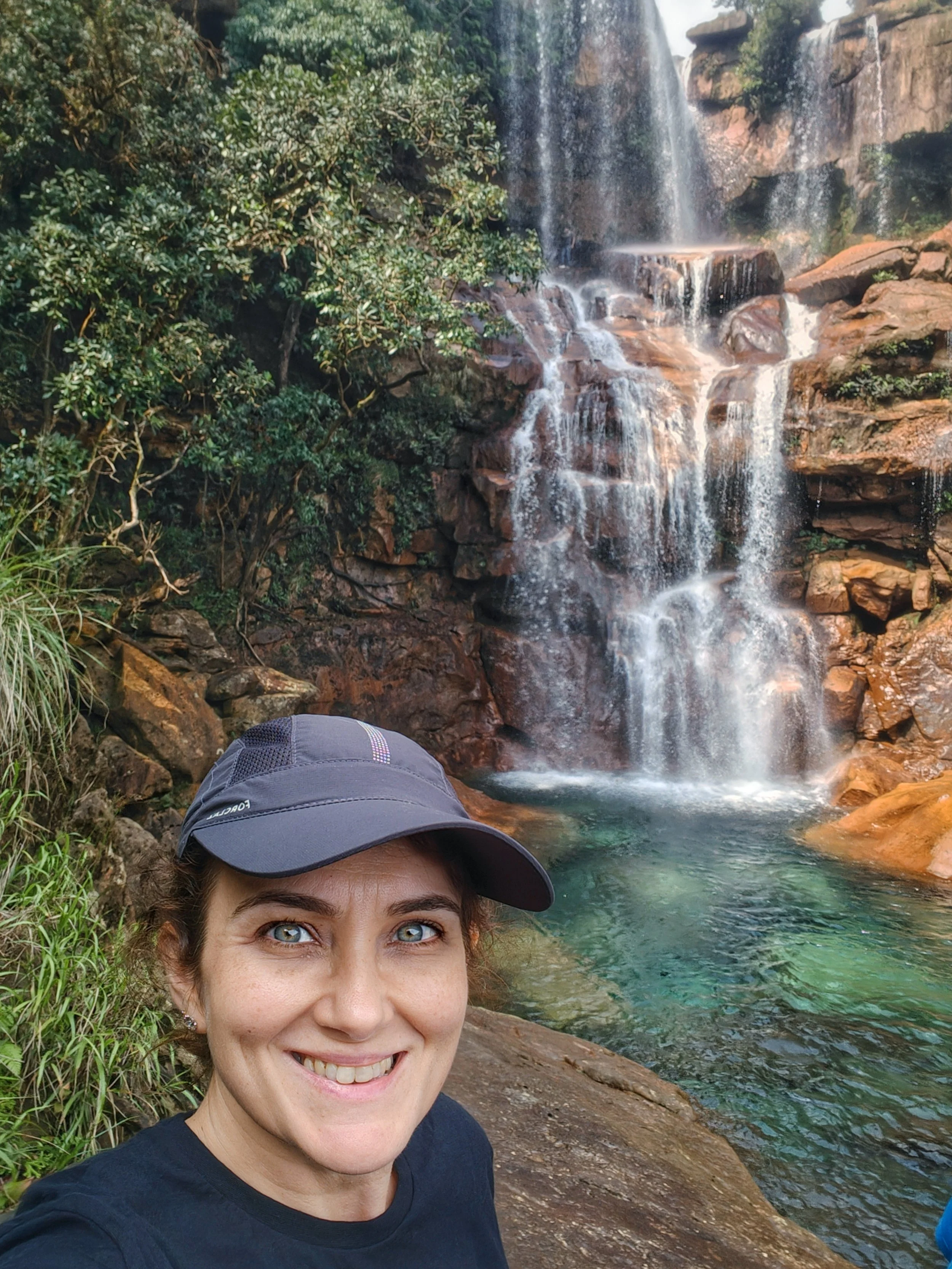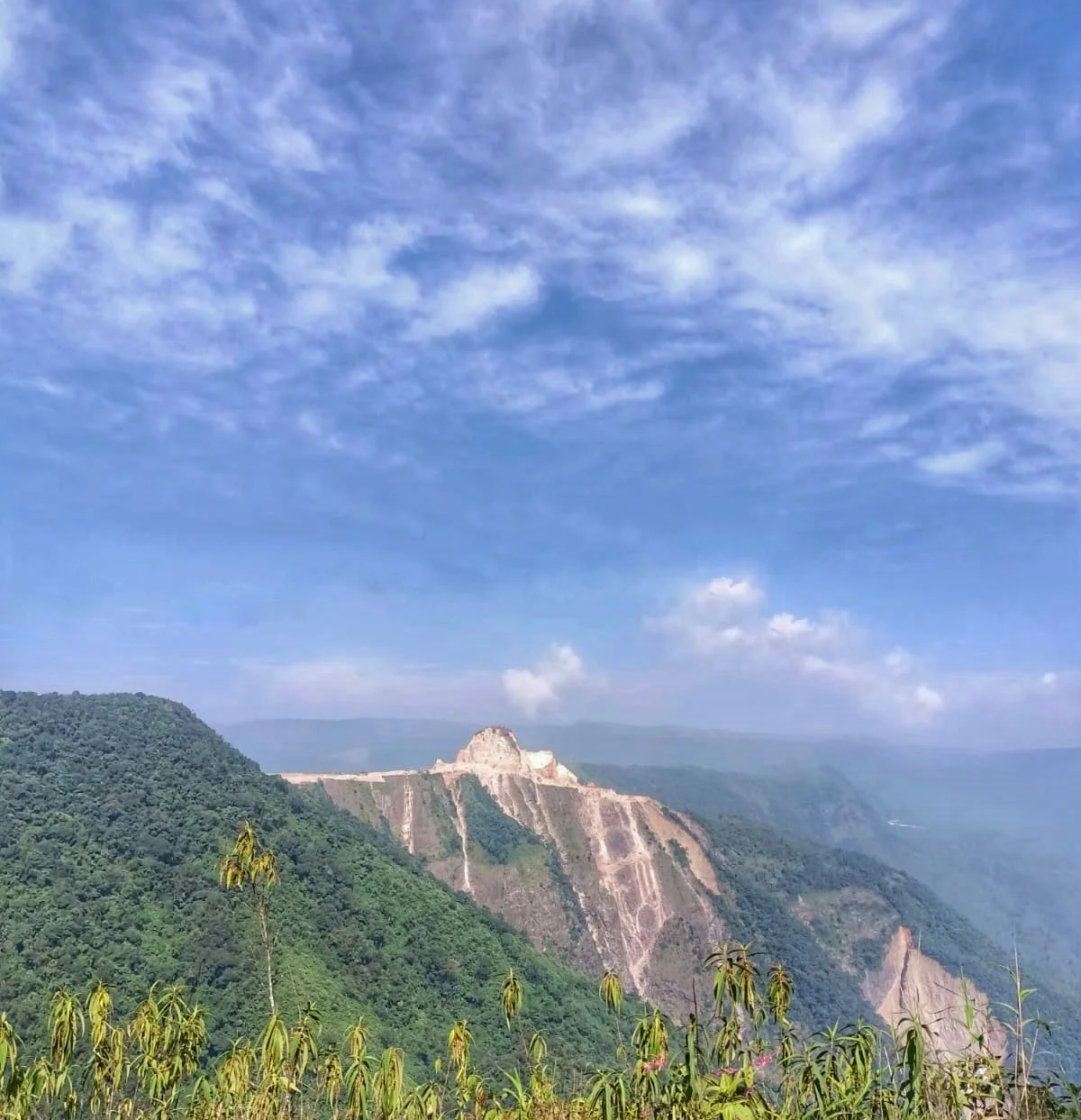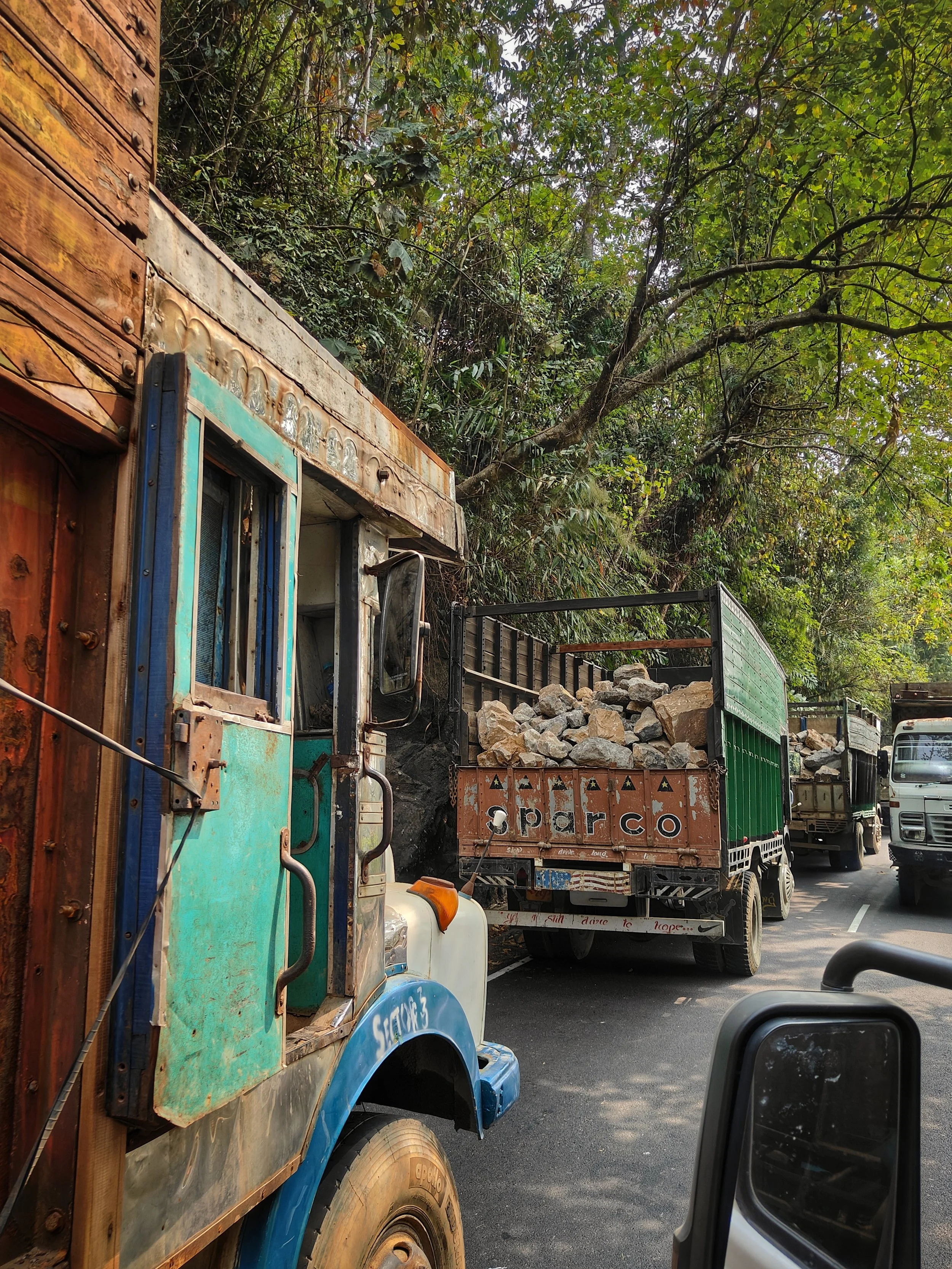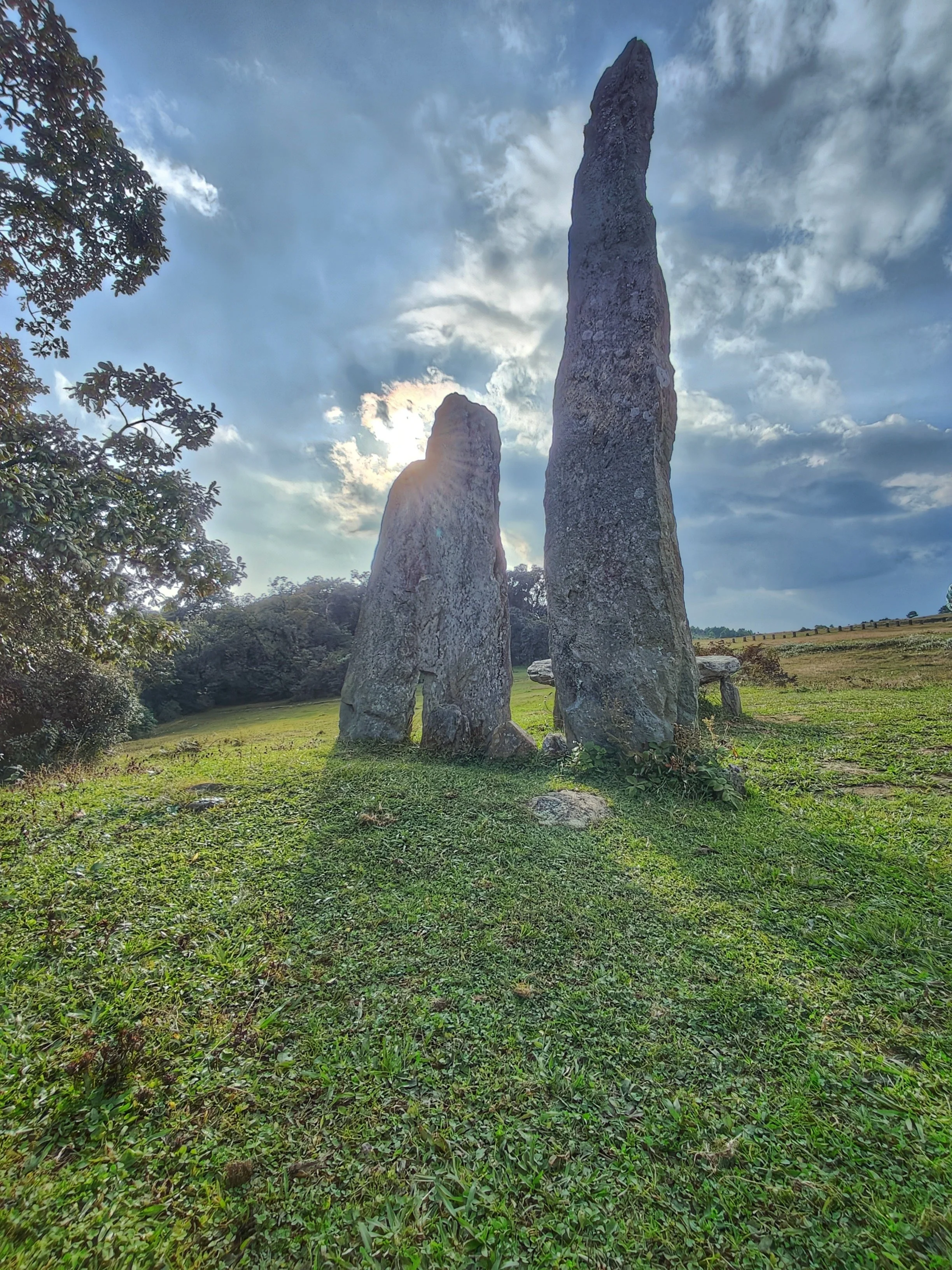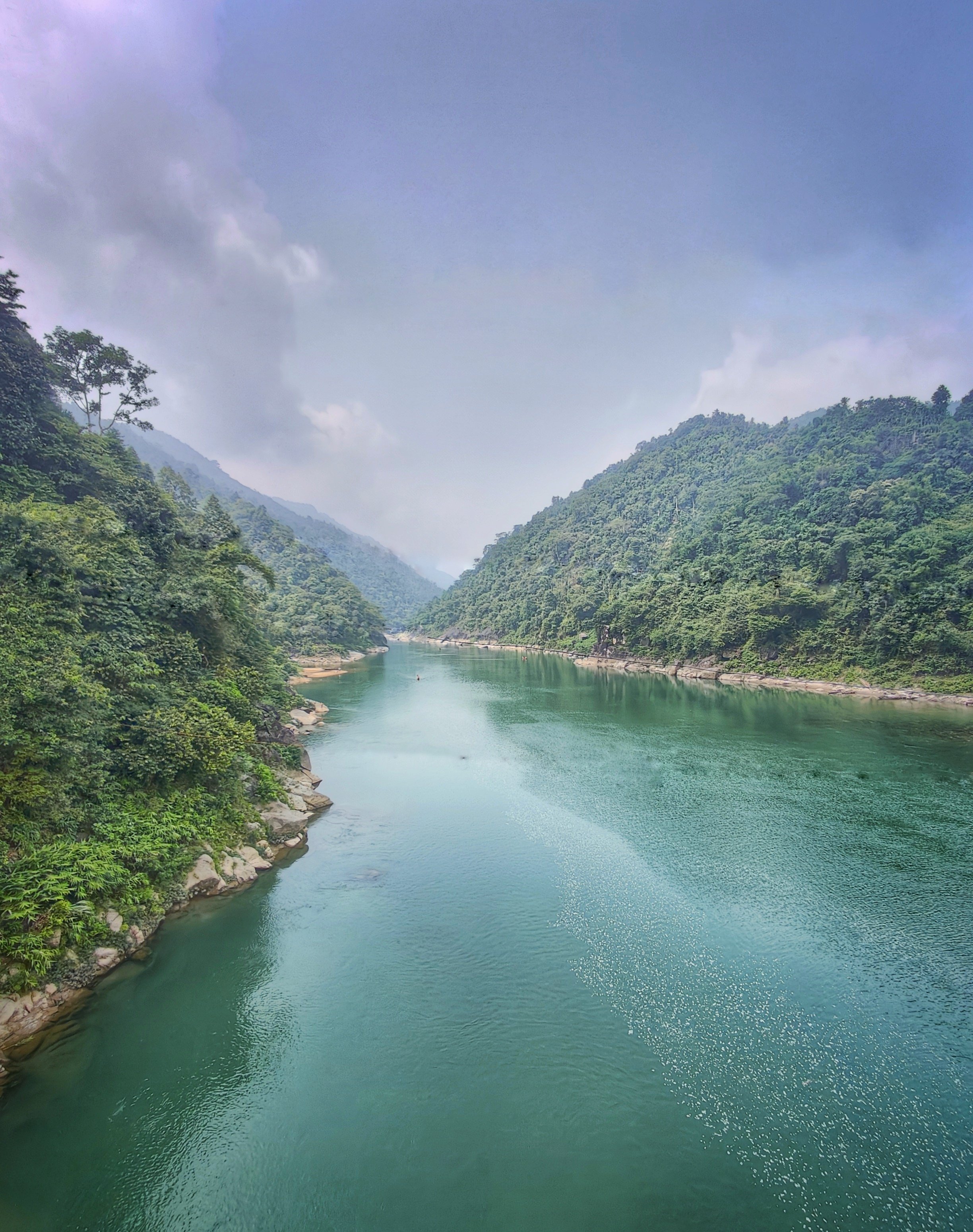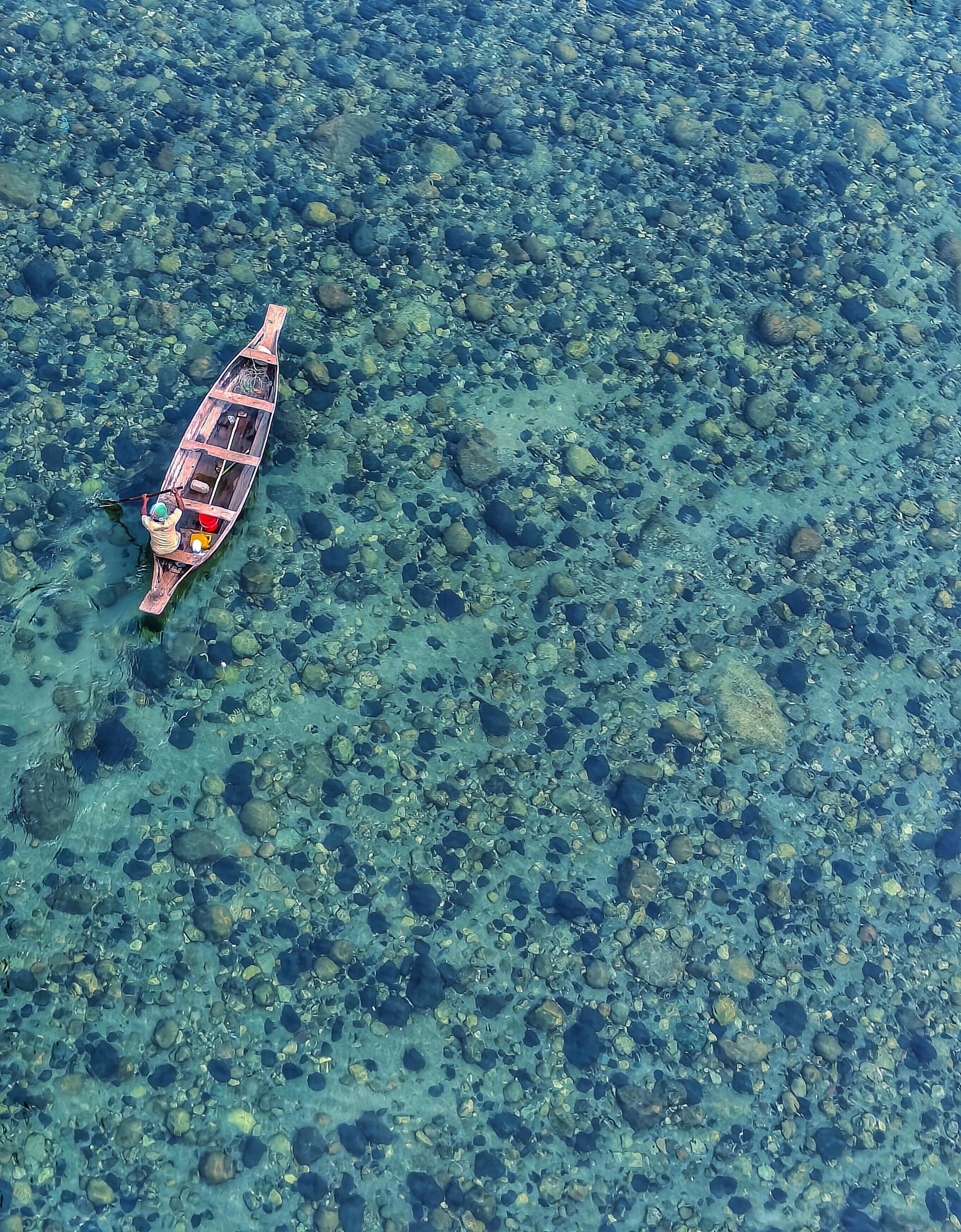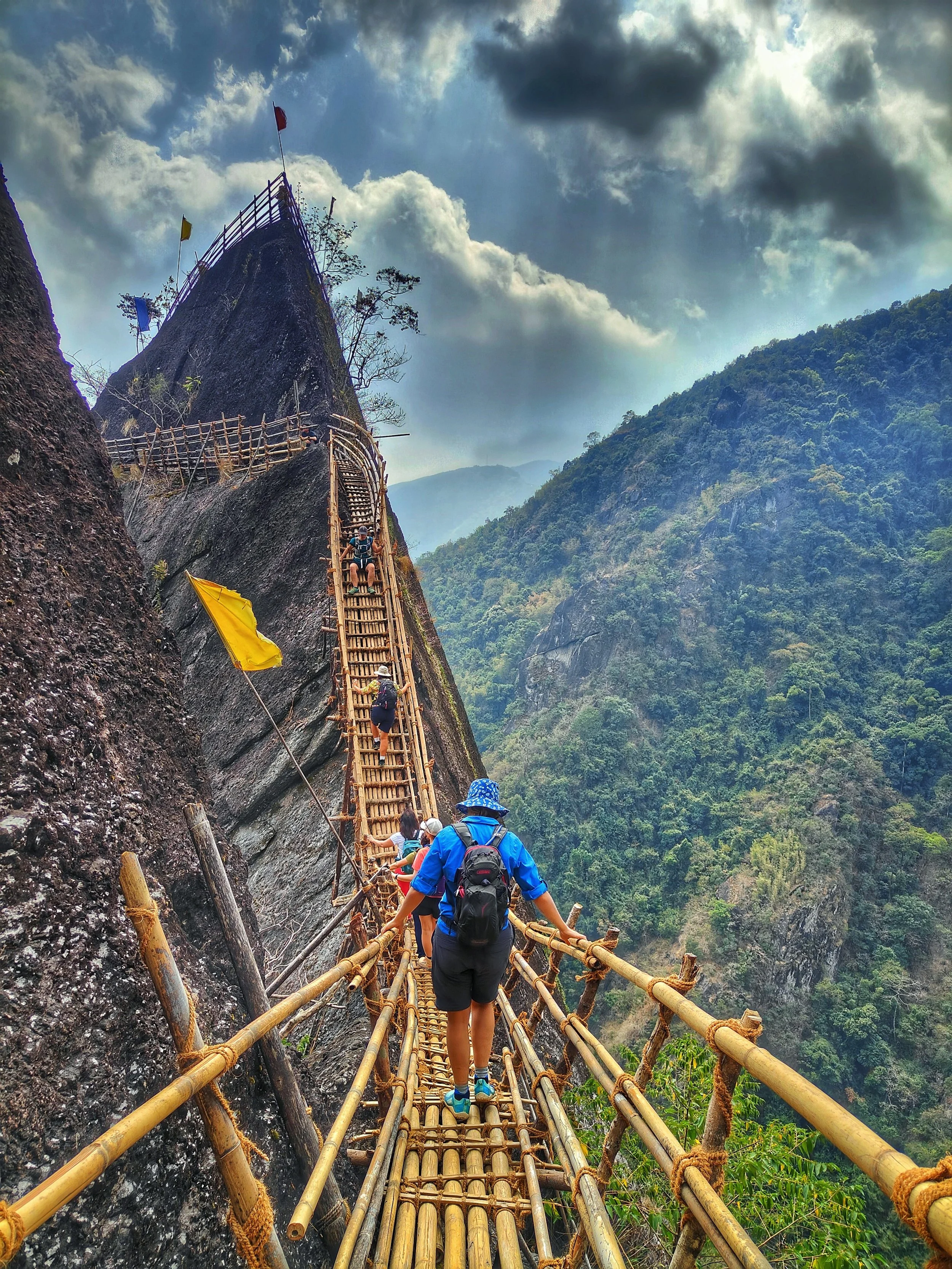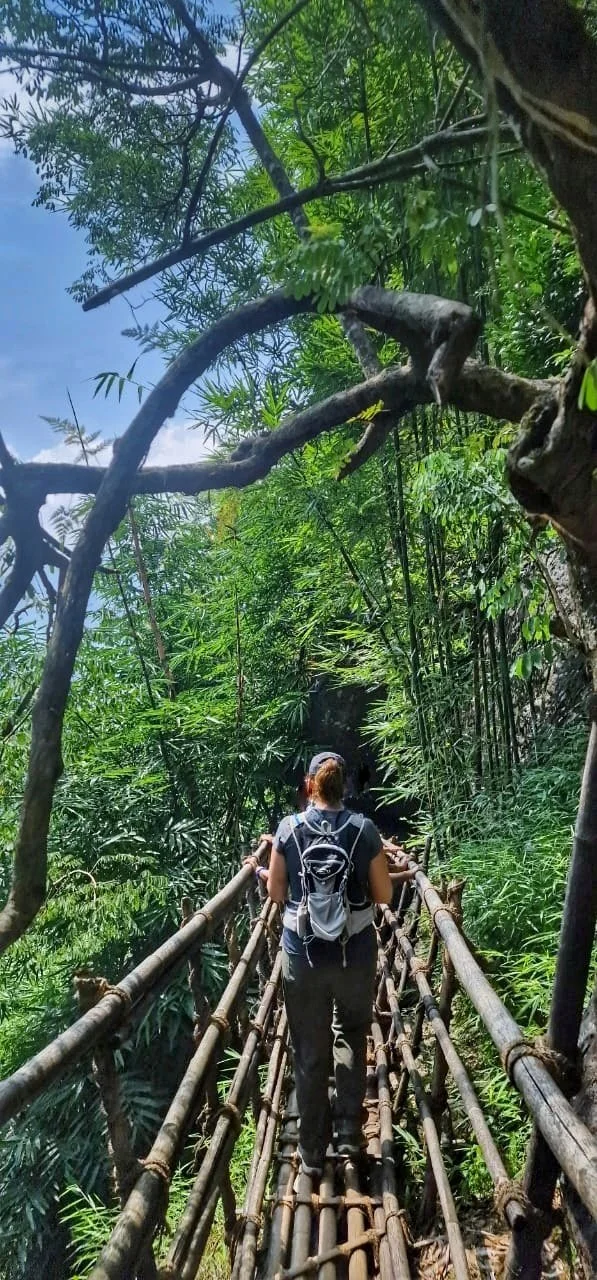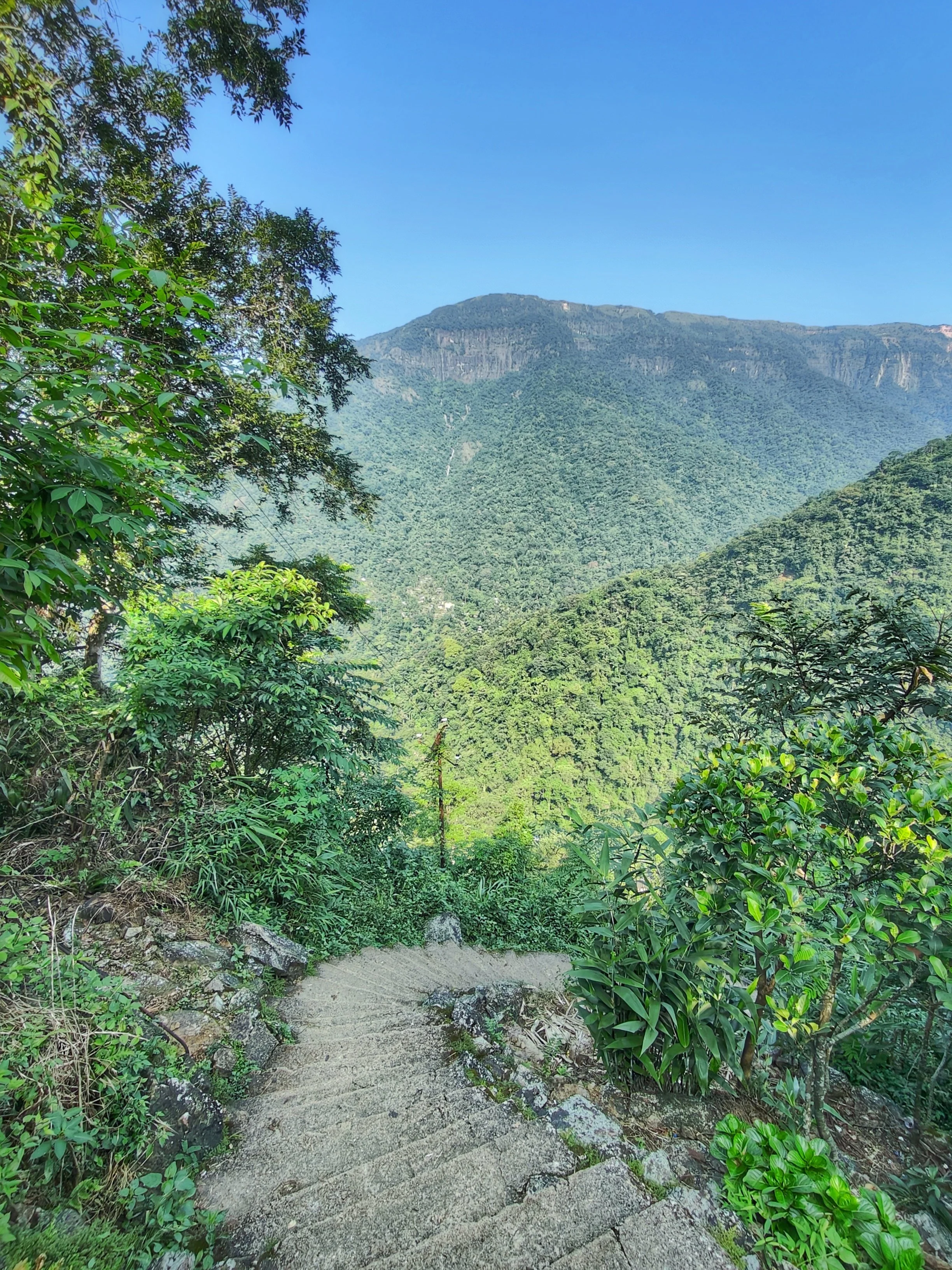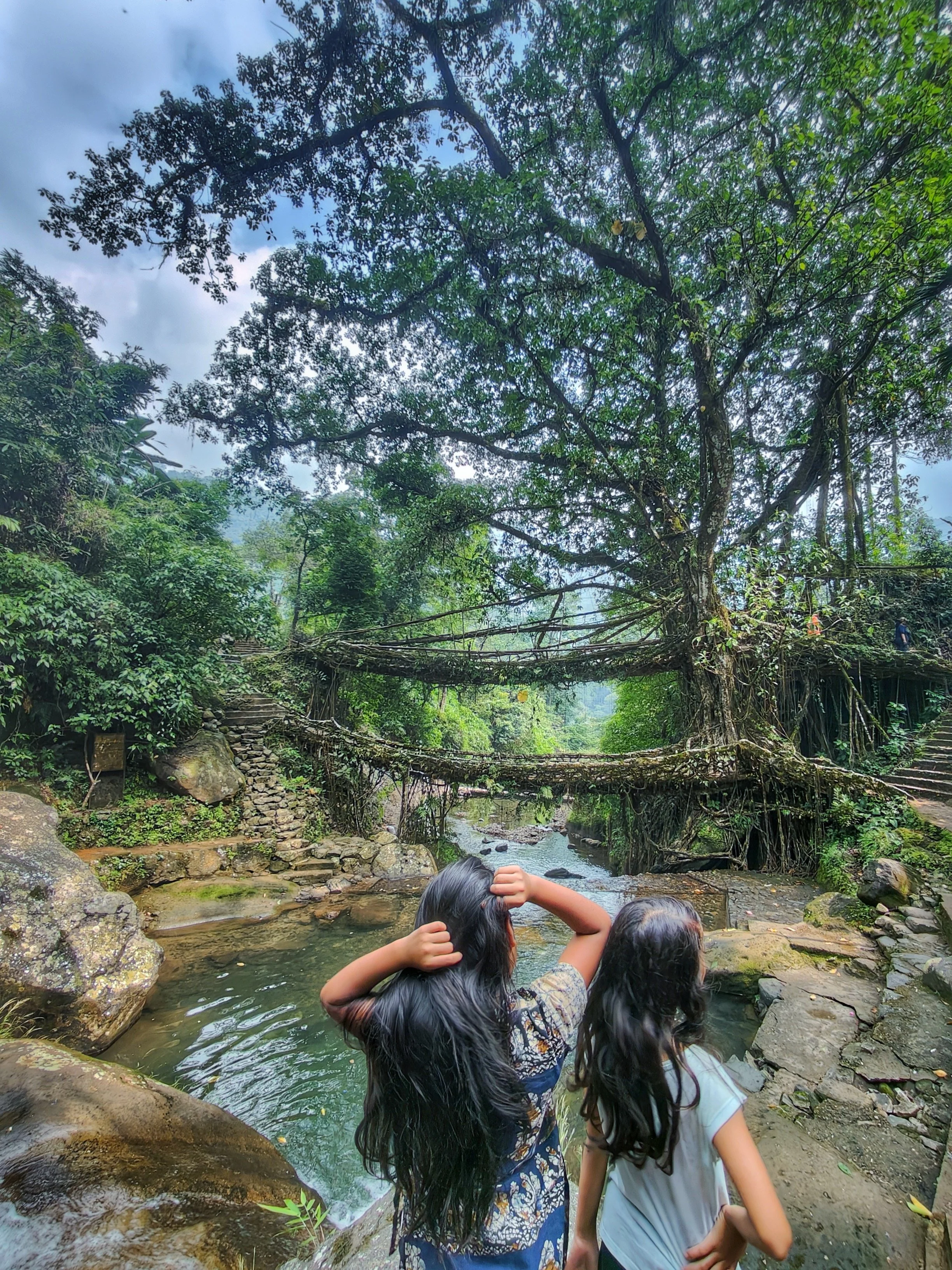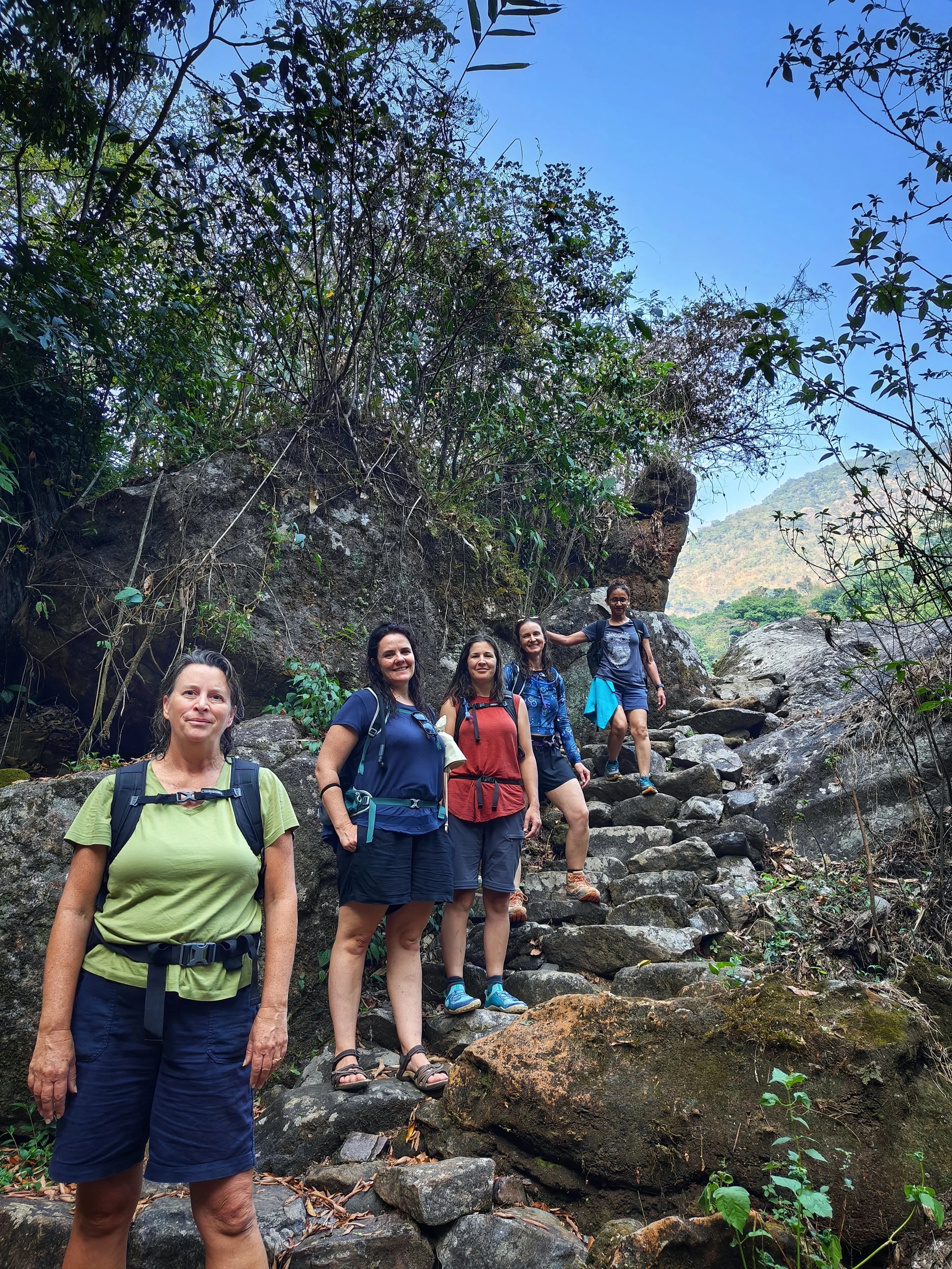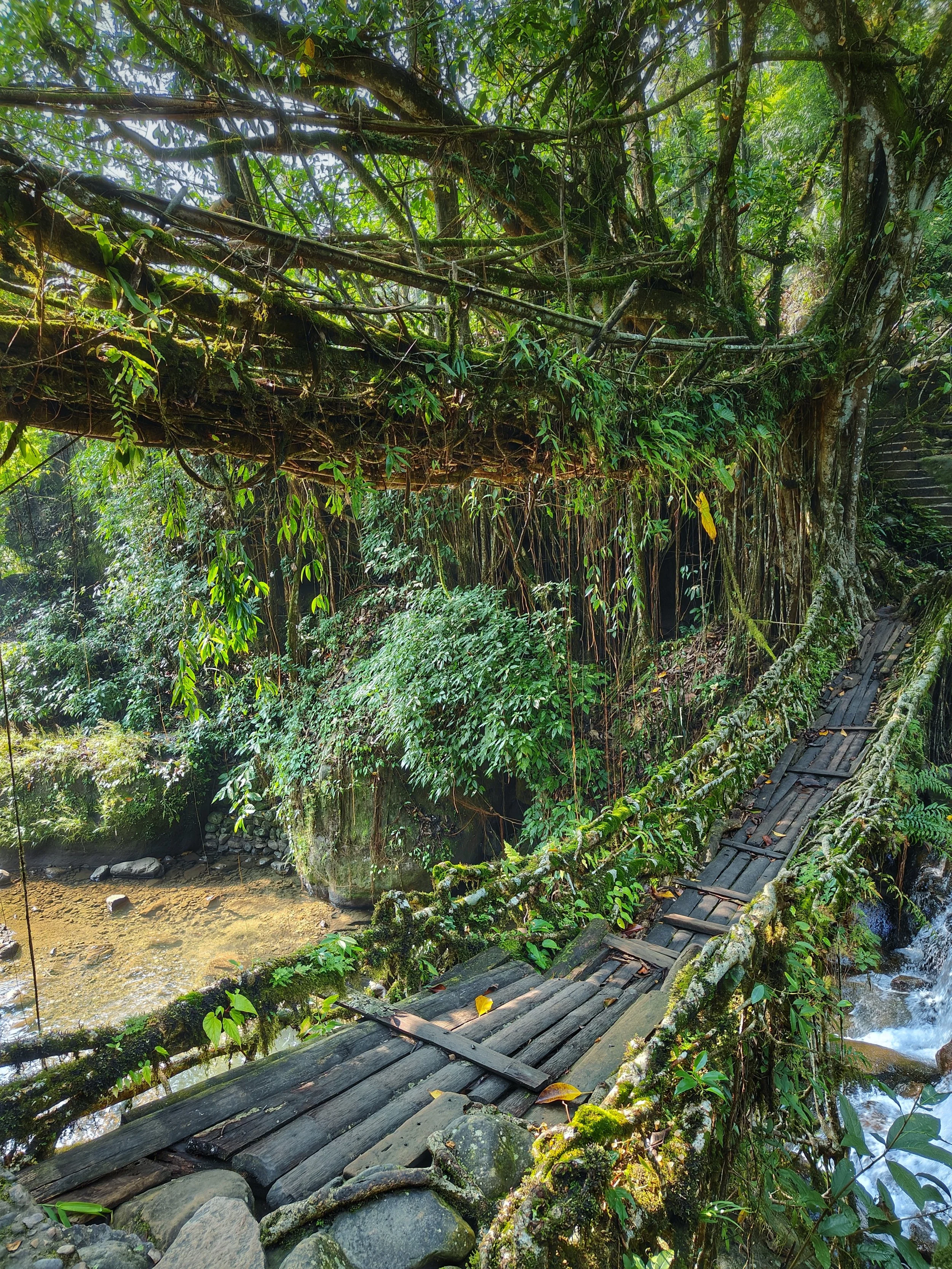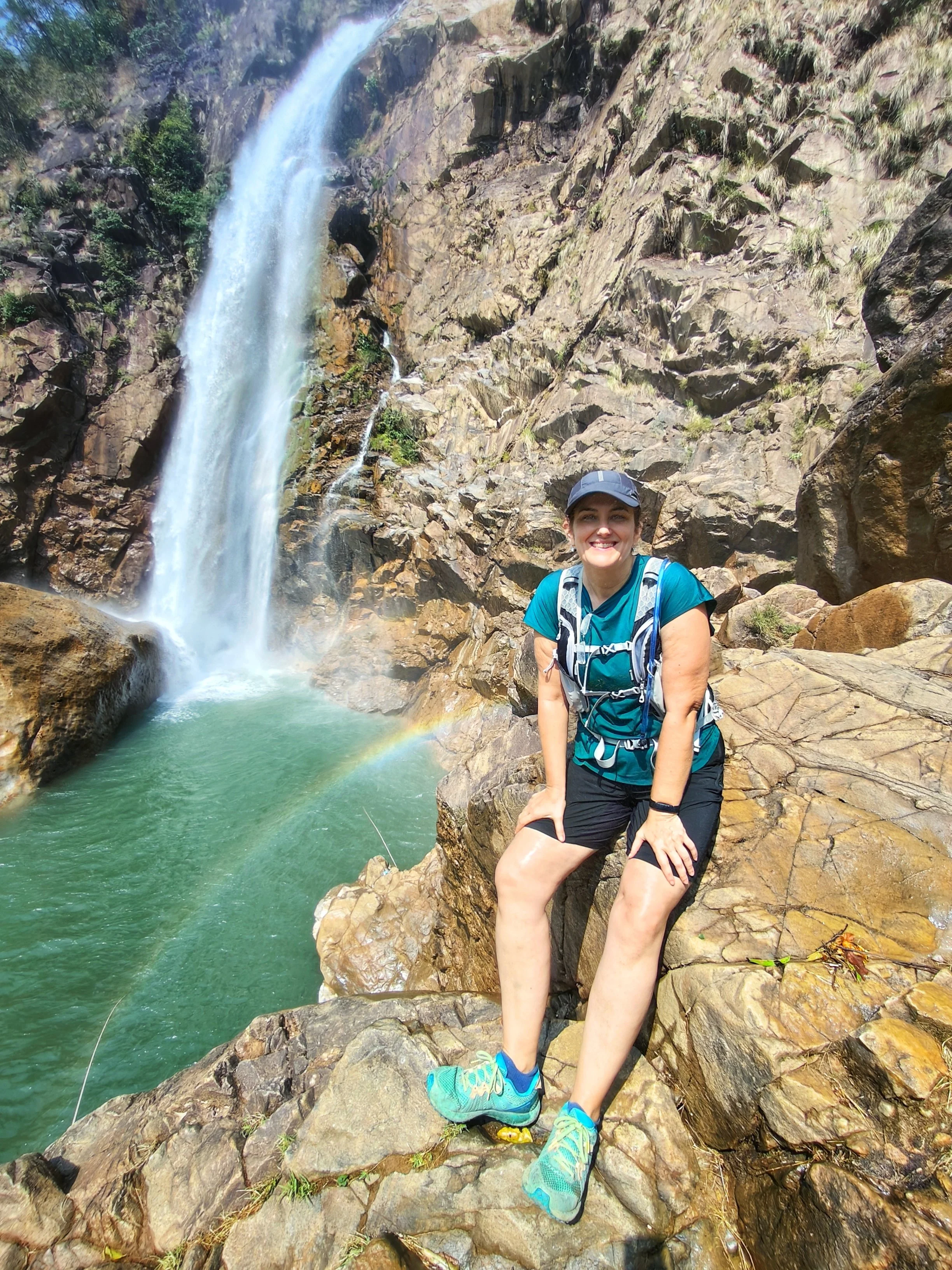A Canadian shares the untold story of ecotourism in India’s state of Meghalaya.
Nongriat Root Bridge. Dawn Lwakila
The story of a remote and pristine location ruined by tourism has become all too familiar. However, right now, one of the most spectacular places on our planet needs tourism to help protect itself from the environmental destruction caused by unscrupulous multinational corporations.
As a Canadian who has been living in India for just shy of a decade, I have learned to appreciate that we cannot define this complex and wonderful nation by clinging to a single worn-out narrative. From Buddha’s birthplace in Bihar in the east to the great kingdoms in the south, India has many stories to tell. I run a travel mentoring company called Wander International where I rely on my 30-plus years of travel experience to curate unique trips throughout India and around the world. I accompany each one of my groups, focusing on meaningful and transformational travel experiences. For me, travel is more than mere entertainment. It is an opportunity for personal growth and a chance to connect with the communities that we visit. With this in mind, I feel compelled to shine a spotlight on Meghalaya.
Meghalaya (literally translated to “The Abode of Clouds”) is part of the “Seven Sisters,” a cluster of seven states located in the far northeast of India. These states are connected to the main body of India by a narrow bridge created as West Bengal reaches over the top of Bangladesh. There is no doubt that Meghalaya is among the most beautiful of all the “sisters.” Yet most international tourists in India know nothing of Meghalaya’s awe-inspiring landscapes, nor are they aware of the constant threat that she has been under.
In Meghalaya, 75% of the population practices Christianity. The British, during colonization, flocked to Meghalaya’s capital, Shillong, in the cool misty mountains, content to escape the heat and humidity they found in other regions of India. The significant influence of the British has left almost every village with a prominent church, yet many of the Indigenous people see nature as their place of worship.
Meghalaya is home to several tribal groups, with the three main Indigenous communities being the Khasi, Jaintia and Garo. The Khasi and Jaintia are matriarchal societies, as women hold leadership roles and control their families’ wealth. The Garo uphold matrilineal principles, tracing lineage through the mother’s side. I have spent most of my time in Meghalaya with Khasi friends and have also visited the West Jaintia Hills on a few occasions.
My good friend and local Khasi guide, Steve Kynta. He has accompanied me on all of my adventures in Meghalaya. Dawn Lwakila.
A picture of me at Prut Falls. Near the top, you can slip in behind the curtain of the waterfall and see the falls from behind. Dawn Lwakila.
In post-colonial India, tribal communities are still treated like second-class citizens, their sacred lands being shamelessly plundered. Large-scale quarrying for limestone and coal has left horrific scars on the land. I have seen mountains leveled to the ground. The mass deforestation and the denuding of the land are happening on a devastating scale. In areas that have not been protected, massive transport trucks filled to the top with rock stand bumper-to-bumper, lining the roads for miles on end. It is not uncommon to drive past these trucks for 30 minutes continuously. Trying to calculate just how many truckloads are filled each day is beyond depressing. Every day, these convoys drive out of India into Bangladesh, carrying away Meghalaya’s mountains. After decades, there are now places where the mountains are gone, rolled over the border where European companies can process the limestone with little regulation. Those simple white stones once held up forests, villages and an incalculable variety of wildlife and vegetation.
A once towering mountain beheaded. Stone by stone, this mountain is being destroyed by multinational companies and taken across the border into Bangladesh. Dawn Lwakila.
Bumper-to-bumper trucks, spanning kilometers on end filled with Meghalaya's limestone going to Bangladesh. Dawn Lwakila.
Contrastingly, the tribal peoples approach their forests with a sense of reverence. They call them “Sacred Forests,” and all but a few are closed to outsiders. The biodiversity in these forests is breathtaking. I’ve witnessed blue glow-in-the-dark mushrooms that look like something out of the “Avatar” movies, amazing varieties of orchids, magnificent birds and countless species of butterflies. As part of their cultural and spiritual beliefs, the Indigenous communities erect incredible monoliths, the oldest having stood for over 500 years.
Historic monoliths at the Mawphlang Sacred Forest. Dawn Lwakila.
My group enjoying the view at Sohra (Cherrapunji). This area receives the highest rainfall in the world. Even more than the Amazon. Dawn Lwakila.
Meghalaya’s hilly landscapes are also home to diverse, beautiful and ancient communities. For instance, in the Khasi village of Khongthong, each villager is known by a unique whistling tune, allowing them to be recognized long distances away from the village. They are able to communicate a range of information through whistling. No two villagers have the same tune. This tradition is known as “jingrwai iawbei” (translated to “song of the mother” in English) and is centuries old.
For decades, a small but strong group of people from around the globe have stood alongside the Indigenous people of Meghalaya to safeguard their lands. Little by little, pockets have been set aside for protection under the umbrella of tourism. Alongside my Khasi guide and friend, Steve Kynta, I have taken small groups of tourists to venture into these fragile and beautiful lands. I’ve watched them sit spellbound as they silently row along a river so crystal clear that every stone and fish is visible with unimaginable clarity. Tiny waterfalls leap out of the forest from high above, tumbling straight down rock cliffs into the river. Thousands of vibrant butterflies paint the riverbanks as they gather around the shallows.
This is the section of the Umngot River that we go boating and swimming in. It is calm and peaceful and leads us to some beautiful landscapes. Dawn Lwakila.
Crystal-clear Umngot River in the West Jaintia Hills. This boat looks like it’s skipping the bottom, but it is actually in deep water that is like glass. Dawn Lwakila.
I’ve seen my travelers conquer their fears as they summit the Mawryngkhang Trek. Otherwise known as the Bamboo Trail, this trek is a series of bamboo walkways and bridges. Inexplicably wrapping around sheer cliff faces and crossing gaping chasms between peaks, these paths end with a vertical bamboo ladder leading up to the summit of Mawryngkhang, nature's own monolith erected millions of years ago. As flimsy as these bamboo bridges and walkways may seem, the engineering is sure and sound. This architecture is the mastery of generations. Now, Meghalaya’s Ministry of Tourism recognizes the Bamboo Trail as an important site and funds the regular inspection and upkeep, providing jobs for those who have had these skills passed down to them.
The final stretch leading to the summit of the Mawrynkhang Trek, aka the Bamboo Trail. Dawn Lwakila.
Mawrynkhang Trek as it cuts through the jungle. Dawn Lwakila.
While false stereotypes have defined India as dirty and polluted, “The Cleanest Village in Asia” is located in Meghalaya. The picturesque village of Mawlynnong is located about 5000 feet above sea level in the East Khasi Hills. The women of the community spearheaded an initiative to have zero litter in their village and to beautify it with flowering gardens. This small effort has blossomed, now receiving national and international recognition. Locals have created a reception area for travelers where they sell trinkets, handicrafts and snacks, all of which boost their local economy.
My favorite of all these places is a village of 40 families called Nongriat, famous for its woven root bridges that are hundreds of years old. There are no roads, cars, or motorbikes that go to Nongriat, with more than 3500 steps leading down to the village from the last road. Getting down is the easy part; getting out means going back up all those steps. Nongriat has become a travel destination for Indian tourists wanting a photo of themselves on the double-decker root bridge — Instagram gold. The last time I was there, the villagers had started building a third level, hoping to make a triple-decker bridge even more of an attraction.
This is near the start of the 3500 steps leading to the village of Nongriat. The tiny white dot in the middle of the photo, across the valley, is Nongriat. Dawn Lwakila.
Swimming with local kids under the root bridge in Nongriat village. Dawn Lwakila.
These root bridges are created by weaving the long, hair-like roots from the Indian rubber tree when the roots are very young and tender. It takes 40 years for them to span a river and grow strong enough to hold the weight of people and goods. Once fully grown, they can last for hundreds of years. The selfless labor of these bridge-weavers is truly for the benefit of the next generations.
Despite the flocks of Instagrammers who trek down to the village solely for a photo opportunity, there is a more magical side of Nongriat that hardly anyone experiences.
There are a few quaint guest houses in the village. Once the sun sinks behind Nongriat’s tall mountains, peace descends over the village. The local kids pull at our arms, inviting us to join their dances or games. Once everyone is tucked into bed, the sounds of the rainforest lull us to sleep.
From Nongriat, there are trails that can take you to some great places. Locals have told me they have shared only a handful of locations with us travelers, and the best places they have kept hidden from outsiders, as they should. I can’t imagine how stunning those places must be, because the locations they have shared with me were insanely beautiful. The two most epic spots are Blue Lagoon and Rainbow Falls.
One of my groups — exploring the trails around Nongriat heading to Rainbow Falls. Dawn Lwakila.
My favorite swimming spot, Blue Lagoon, located in the valley beyond the village of Nongriat. Dawn Lwakila.
Blue Lagoon is an aqua-blue pool cut out of the jungle and fed by a double waterfall. Undoubtedly, it is the most beautiful place I have ever been swimming. Rainbow Falls is further down the same trail. When the sun hits it just right, the mist from the falls becomes a dazzling rainbow. The surroundings are unreal, as flowers of every color cascade from the treetops down to the forest floor. Birds and butterflies of every shade and hue add their own dancing rainbow to this magnificent landscape.
Byron, a local Khasi man who has fought hard for the protection of Nongriat and the surrounding hills, told me that up until recently this whole area was threatened by quarrying and deforestation. He explained that he and his people have worked hard to protect their land. For now, that battle has been won. Their area has been set aside as an important historical and tourist location. Their hope is that small-scale ecotourism will continue. The Instagrammers who click a photo of their bridge and promptly leave are welcome. Their photos inadvertently remind those who hold the reins that these forests matter and should not be destroyed.
Handwoven root bridge found in and around the remote village of Nongriat. Dawn Lwakila.
Me cooling down in the mist spraying off of the perfectly named Rainbow Falls. Dawn Lwakila.
The handful of travelers who stay overnight, experience the village beyond the root bridge and venture deeper into the heart of this valley will spread their stories around the world of this fragile place of wonder.
As we know from history, ethics have a hard time defeating greed. Huge multinational corporations often have more clout than a handful of villagers occupying a raw and remote valley that is practically uninhabited. So I will keep visiting this area, not simply because it is a beautiful place to take my groups but because our tourist dollars and our presence there have an impact on the future of this place. What brings me the most joy is that the Khasi who inhabit this valley have opened up only the tiniest area for tourism. The rest is secreted away, out of sight but protected.
Dawn Lwakila
Dawn Lwakila, a Canadian veteran traveler for over 3 decades, has created this simple guidebook, A Travel Guide for Beginners, to help get you started on your dreams of global travel. Even experienced travelers may learn a thing or two. This easy to follow, step by step, illustrated guide answers all the practical questions that come up before you even start any actual planning. This quick read will help you figure out how to budget, what to pack, the best tricks for booking flights, the ins and outs of finding the right accommodation, how to stay safe and much more. With her invaluable advice you will have a clear path for turning your dreams of travel into reality.
Get your copy so you can start planning your next adventure here.

